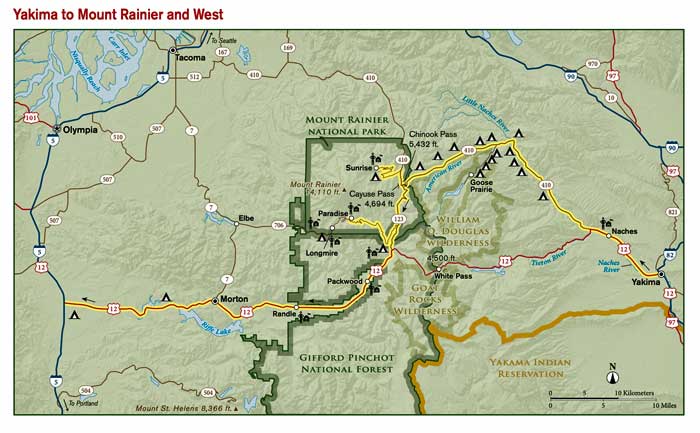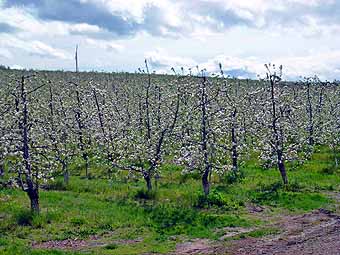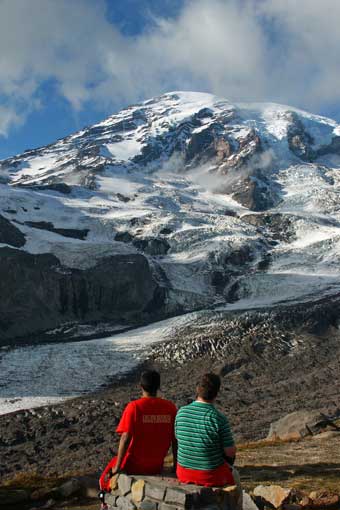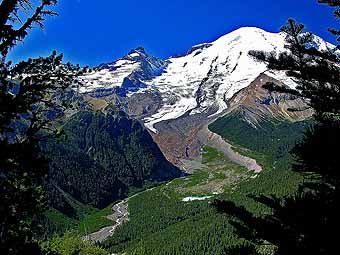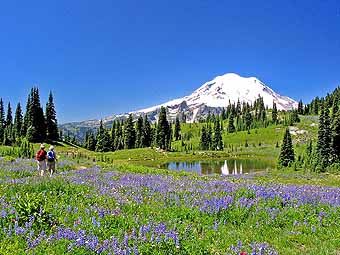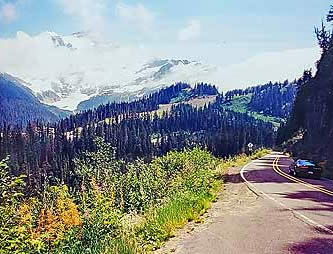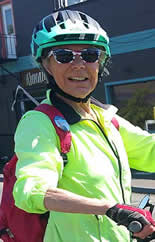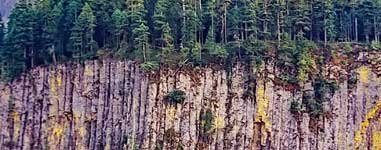
SEPTEMBER/OCTOBER 2025, OUR 29TH YEAR
SCENIC DRIVING WASHINGTON, Pt. 2 |
||
Story and photographs by Lynn Rosen and Steve Giordano and as attributed |
In our High On Adventure issue of January/February, 2025, we shared a preview of our soon-to-be-published guide book, Scenic Driving Washington by showcasing one of the 25 drives in the beautiful and diverse state of Washington. In this issue, we are focusing on another spectacular drive that includes one of the most popular destinations in the entire state - Mount Rainier National Park. This 225-mile drive, #19 in Scenic Driving Washington, begins on U.S. Highway 12 west from Yakima and parallels the Naches River through the apple orchards of Naches Valley, then crosses the Cascade Divide and the Pacific Crest Trail on the way to Mount Rainier National park, named a National Historic Landmark in 1997.
The road into Sunrise climbs from 3,500 feet and passes Governors Ridge and the Cowlitz Chimneys on the left. When there is a dense cloud layer over Mount Rainier, it can be hard to distinguish what is snow and what is cloud. The whole lower mountain is peppered with huge rocks, but the entire top is covered with perpetually moving glaciers that descend into the valleys and radiate down the mountain. Mount Rainier is 14,410 feet high.
The drive passes Fryingpan Creek, alongside which runs a popular hiking trail. The trailhead is at 4,000 feet. This is also where the drive takes a turn to the right, with Sunrise 11 miles farther on. The drive twists and turns, climbing all the while. Even the visible mountains which merely surround Mount Rainier appear very impressive. Lupine and Indian paintbrush decorate the switchbacks.
Six miles from Sunrise, the enormous scale of the glaciers ahead is hard to believe.
A visitor center with displays and a ranger station offer information at Sunrise. A telescope is mounted on the back deck of the visitor center. Even through a telescope, climbing teams on the mountain are not easy to spot. In spite of what appears to be close proximity to the glaciers here, they are still very far away. From Sunrise, the distance to the summit of Mount Rainier is more than 7 miles. Don’t even think of running out of gas up here in the national park. The rangers are very clear about saying that there is no gas at the ranger station. There are, however, three EV charging stations in the park: one at Paradise Inn and two at National Park Inn.
The road that used to go past Sunrise for camping, now stops there. Only hikers may venture beyond this point. This is part of the National Park Service’s program to close, bit by bit, roads into the wilderness. NOTE: Due to Mount Rainier Park's popularity, the National Park Service has instituted a timed-entry reservation system to manage crowds and make visitors' experience more pleasant. Before you go, check their website for current fees and details.
|
